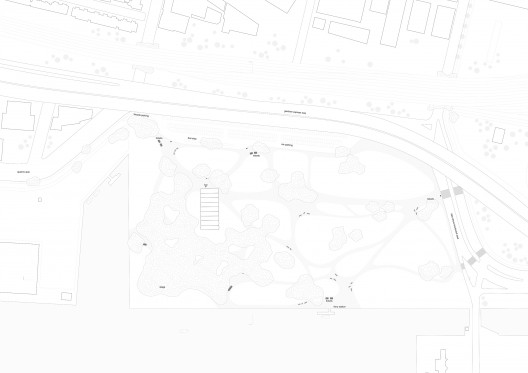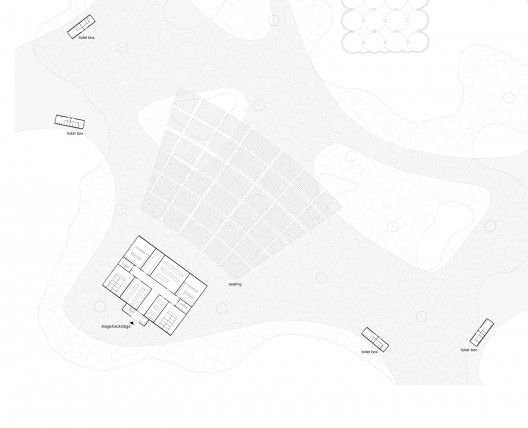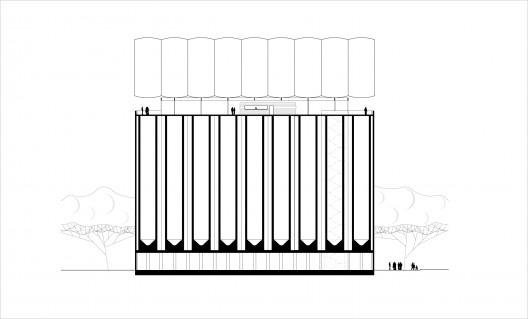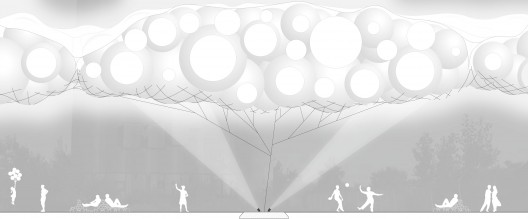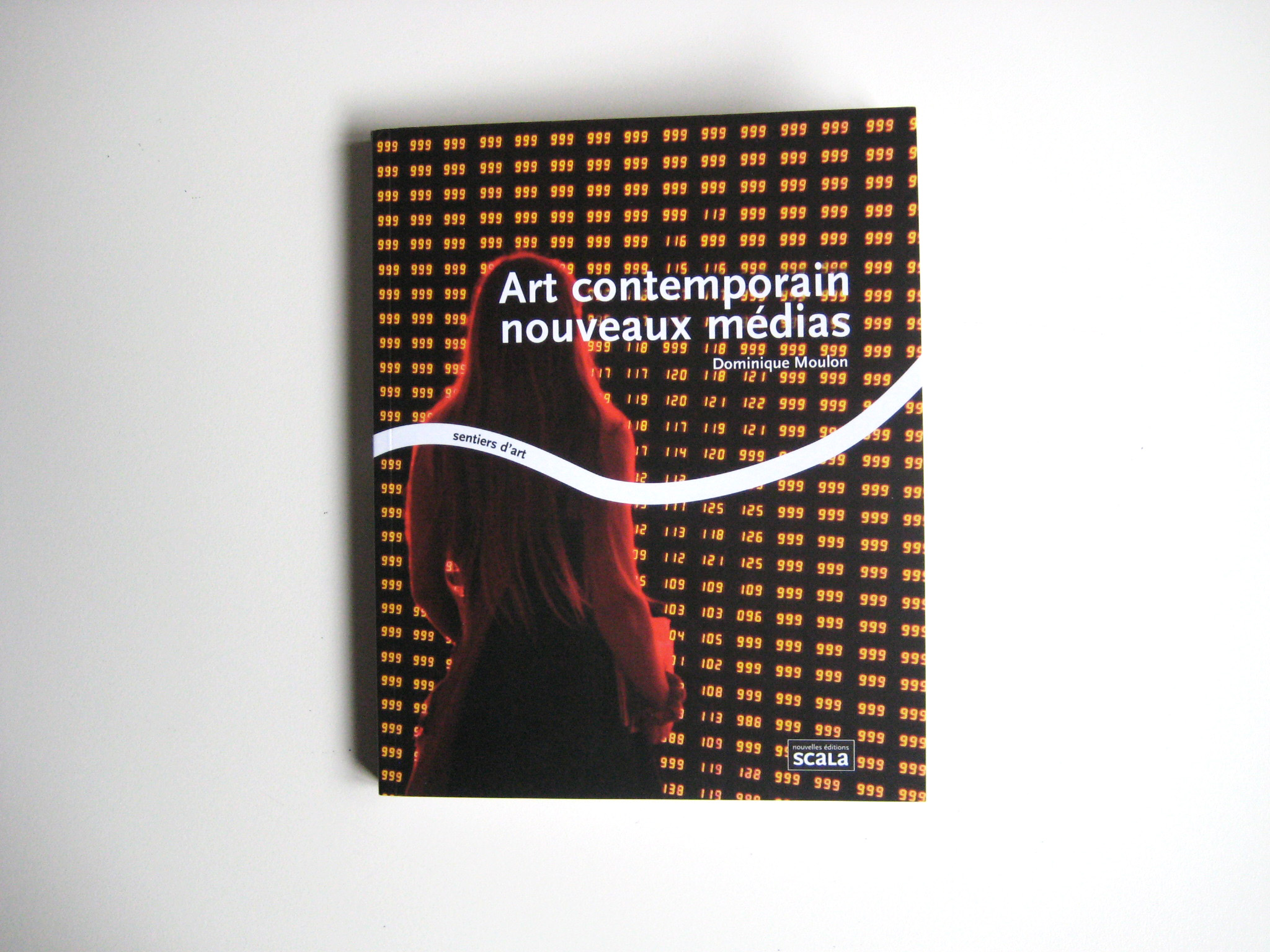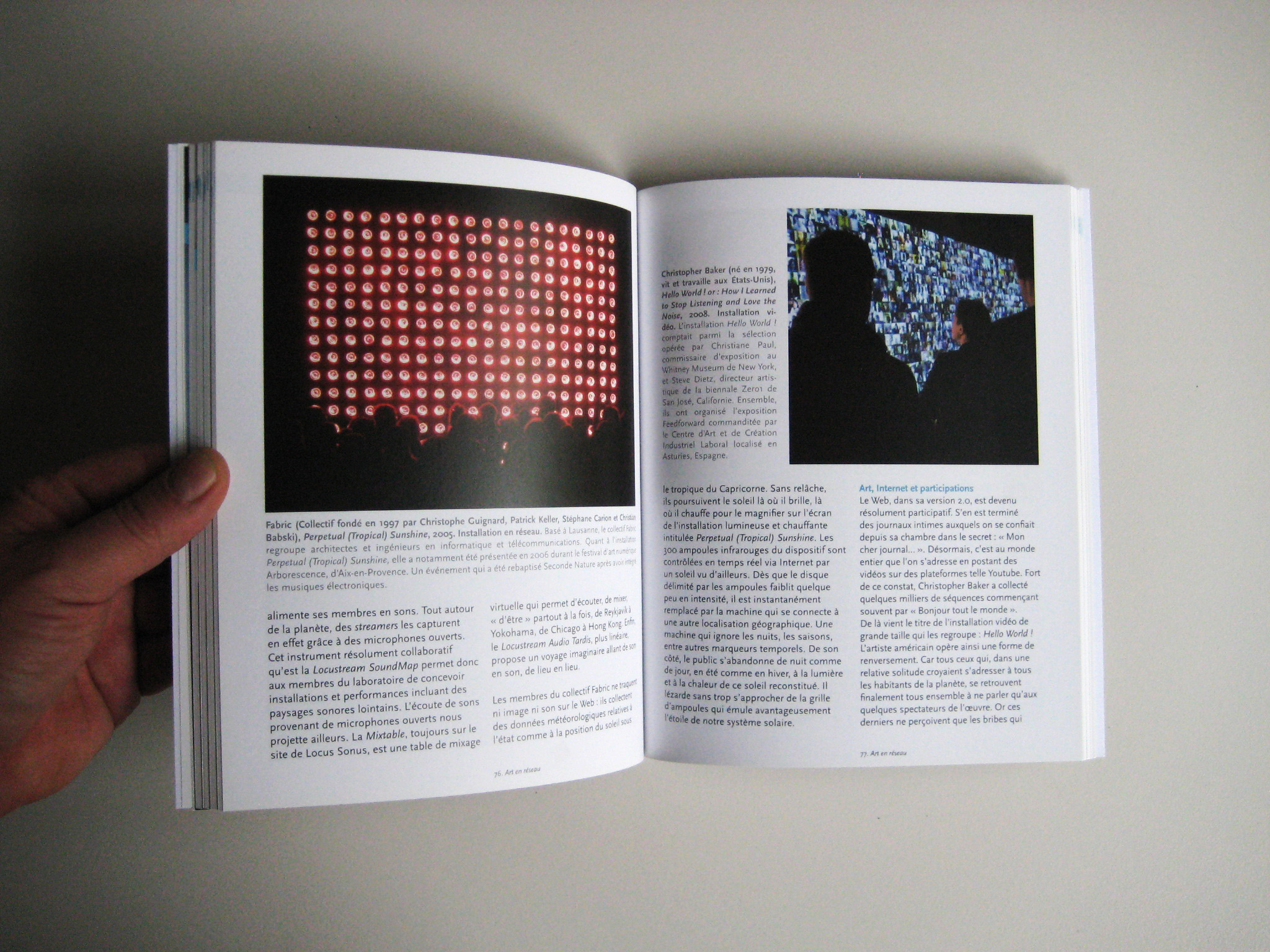Tuesday, November 22. 2011
Artist Prints Out 24 Hours of Flickr Uploads, Over One Million Photos
Via GeekOSystem via Computed·Blg
-----
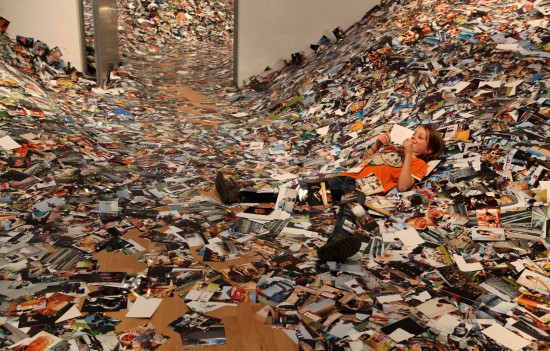
A new installation at the Amsterdam Foam gallery by Erik Kessels takes a literal look at the digital deluge of photos online by printing out 24 hours worth of uploads to Flickr. The result is rooms filled with over 1,000,000 printed photos, piled up against the walls.
There’s a sense of waste and a maddening disorganization to it all, both of which are apparently intentional. According to Creative Review, Kessels said of his own project:
“We’re exposed to an overload of images nowadays,” says Kessels. “This glut is in large part the result of image-sharing sites like Flickr, networking sites like Facebook, and picture-based search engines. Their content mingles public and private, with the very personal being openly and un-selfconsciously displayed. By printing all the images uploaded in a 24-hour period, I visualise the feeling of drowning in representations of other peoples’ experiences.”
Humbling, and certainly thought provoking, Kessel’s work challenges the notion that everything can and should be shared, which has become fundamental to the modern web. Then again, perhaps it’s only wasteful and overwhelming when you print all the pictures and divorce them from their original context.
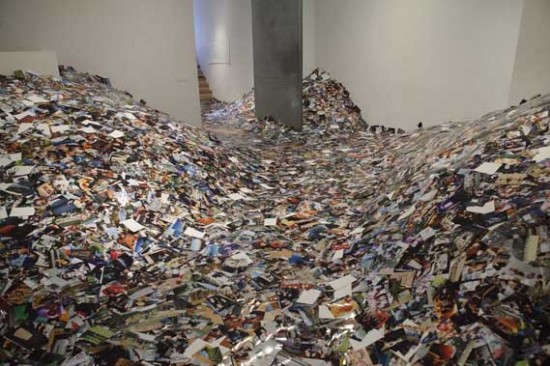

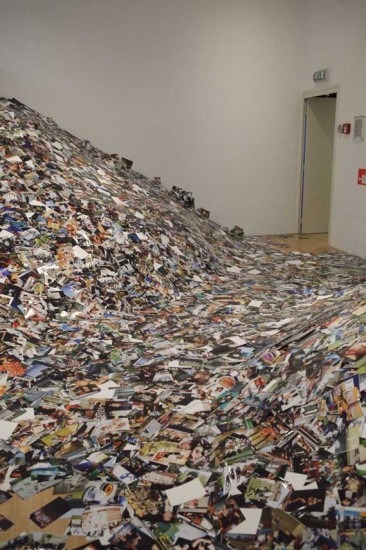
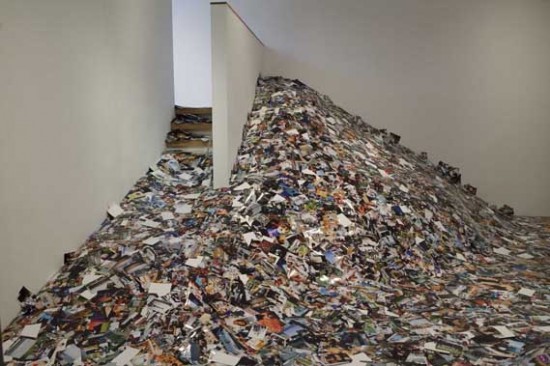
Thursday, September 22. 2011
Will Ebooks Destroy the Democratizing Effects of Reading?
-----
Could Abraham Lincoln have become president of the United States in a world in which poor children lack access to physical books?
By Christopher Mims

Andrew Carnegie's decision to fund free libraries at the turn of the last century -- like this one in Houston -- was inspired by the belief that knowledge and education are public goods
Today Amazon announced that it is finally rolling out Kindle-compatible ebooks to public libraries in the U.S., a much-needed evolution of the dominant e-reading platform. But there's a larger problem that this development fails to address, and it's an issue exacerbated by every part of Amazon's business model.
Access to knowledge has long been seen as vital to the public interest -- literally, in economic parlance, a "public good" -- which is why libraries have always been supported through taxes and philanthropy. (Carnegie's decision to fund 2,509 of them around the turn of the century being an especially notable example of this.)
I challenge anyone reading this to recall his or her earliest experiences with books -- nearly all of which, I'm willing to bet, were second-hand, passed on by family members or purchased in that condition. Now consider that the eBook completely eliminates both the secondary book market and any control that libraries -- i.e. the public -- has over the copies of a text it has purchased.
Except under limited circumstances, eBooks cannot be loaned or resold. They cannot be gifted, nor discovered on a trip through the shelves of a friend or the local library. They cannot be re-bound and, unlike all the rediscovered works that literally gave birth to the Renaissance, they will not last for centuries. Indeed, publishers are already limiting the number of times a library can loan out an eBook to 26.
If the transition to eBooks is complete -- and with libraries being among the most significant buyers of books, it now seems inevitable -- the flexibility of book ownership will be gone forever. Knowledge, in as much as books represent it, will belong to someone else.
Worse yet, there is the problem of the e-reader itself. This issue may be resolved by falling prices of e-readers, but there remains the possibility that the demands of profitability will drive makers of e-readers to simply set a floor on the price they're willing to charge for one and attempt to continually innovate toward tablet-like functionality in order to justify that price.
Unlike books, which are one of the few media that do not require a secondary external device for playback, e-books put additional barriers between readers and knowledge. Some of those barriers, as I've mentioned, consist of Digital Rights Management and other attempts to use intellectual property laws as a kind of rent-seeking, but others are more subtle.
One in five children in the U.S. lives below the poverty line, and those numbers are likely to increase as the world economy continues to work through a painful de-leveraging of accrued debt. In the past, the only thing a child needed to read a book was basic literacy, something that our public education system in theory still provides.
Imagine Abraham Lincoln, born in a log cabin, raised in poverty, self-taught from a small cache of books, being stymied in his early education by the lack of an e-reader. And there are countless other examples -- in his biography, Bob Dylan recounts spending his first, penniless days in New York City lost in a friend's library of classics, reading and re-reading the greatest poets of history as he found his own voice.
Sure, these are extreme examples, but it is undeniable that books have a democratizing effect on learning. They are inherently amenable to the frictionless dissemination of information. Durable and cheap to produce, to the point of disposability, their abundance, which we currently take for granted, has been a constant and invisible force for the creation of an informed citizenry.
So the question becomes: Do we want books to become subject to the 'digital divide?' Is that really wise, given the trajectory of the 21st century?
Copyright Technology Review 2011.
Wednesday, July 27. 2011
Marshall McLuhan, Media Theorist, Is Celebrated
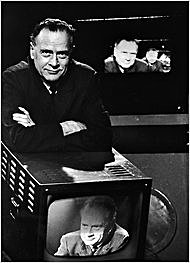
All seems to have been forgiven. Last week events in Europe, Washington and three Canadian cities honored the centennial of the birth of the man who is now widely credited as the world’s first media theorist and who introduced ideas like “the medium is the message” and “the global village” into everyday use. The festivities have helped renew debate over the meaning of his often dense and cryptic, yet challenging, work.
Related Links:
Monday, May 23. 2011
The rise of the “persocial” web
Via OWNI.eu
-----
What do Pandora for music, Zite for news, or Amazon for shopping — along with many Silicon Valley startups I’m meeting these days — have in common?
• They are all offering the user a personalized experience by leveraging his/her social network.
• They also provide a social experience in line with every single user’s personal taste and identity.
Overall, there’s an increasing focus on the person and his/her environment versus the simple social media aspect.
These are only the premises of what I would call the persocial web — a new generation of digital products and services where personal and social dimensions melt together to put every person at the center of the game. The consequences of this trend will be extremely broad for the way we approach the Internet both from a sociological and business viewpoint.
A Socratic revolution
A similar kind of re-focus on the individual is physiological for humanity. It happened in the history of philosophy too, when Socrates put the man at the center of his intellectual quest after decades of philosophical thinking about nature, environment and physics.
In general, the fluctuation between holistic and individualistic eras is also very familiar to the history of ideas. Think about what happened in Europe from the 18th century to the 19th and beyond with the Age of Enlightment, followed by the Romantic Era and then by the Naturalistic movement. It’s just a dialectic and continuous evolution.
From the PC to the Social Media era. And beyond.
While these movements embrace more than one hundred years, my generation has already lived many of these ‘eras’ thanks to the time acceleration provided by information technologies.
The personal computer represents for people like me who are in their 30s the very first approach with computer technology. It was a very personal and sometimes solitary experience of writing and gaming. It was all about you. Well, you, the machine and the rest (games, floppy disks, your docs, etc).
Then the Internet came. First, we felt extremely powerless. We could interconnect and learn in the ‘cyberspace’ thanks to email, portals and chats. But we felt disoriented, until the point when Google figured out a way to have the individual navigating easily through all the amount of data, services and content that were out there in a more effective way than portals or email could do. But even at that stage, we lived in a personal web era. It was all about you, your Web browser and the rest. Beyond bi-lateral exchanges, multi-lateral interactions were difficult and sporadic.
Then Facebook disrupted that paradigm by creating a lasting and robust environment for sharing data and nurturing relationships. Our social life was, and is mirrored — sometimes diminished, sometimes augmented — on Facebook. It’s all about you, your social network and the rest.
I believe the next paradigm that is being formed today is going to envision the individual as the real center of a social environment (Facebook). Digital services and products will increasingly ‘talk’ to the individual in a personal way, by guessing his/her tastes and preferences in an intimate and closer relationship. Borrowing an expression from one of my professors at Stanford, Clifford Nass, they will become “adaptive and personalized systems“.
Leveraging what your social network (Facebook) or other random people (Amazon) do, read or buy to generate an experience that is more relevant to you is good. But designing a whole persocial experience is even better. That means taking into account countless personal data: sex, location, age, education, political and religious views, cultural tastes, all sort of affiliations, groups etc. and melting them with your social graph to offer a better user experience.
Facebook OpenGraph or Twitter API already enable such a personalization but its implementation has been so far more focused on real time and very much instant data (the feed of articles that my friends or people I follow read) than on more long-run information about my tastes (taking into account who I actually am, my background, sex, location etc.).
Towards a persocial news experience?
In the news industry, for instance, many are the news readers that are offering to improve the news experience by persocializing it. I tried to rate them by their personalization (1 to 5 points) and socialization (1 to 5 points) effort.
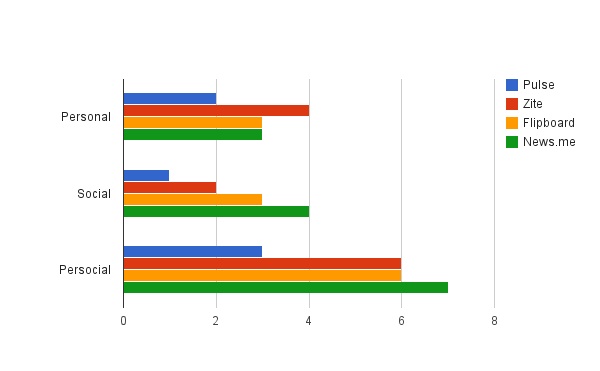
Thanks to its great feature on ‘what my friends are reading,’ News.me, developed by Betaworks and The New York Times, is so far the more persocial news reader, and also the only paid app among the ones we’re analyzing here. In reality, it offers a more social than personal experience. The best personalized features are so far provided by Zite, a Canadian news reader for the iPad, which recently received a ‘cease or desist’ letter from several U.S. publishers. While Flipboard is a fair trade-off in terms of persocialization, Pulse, conceived by smart Stanford students, is intentionally closer to a traditional and yet very clean news reader experience.
Overall, an iPad app that would combine the social features of News.me with the personalization of Zite, would probably be fully persocial.
In general, these new ventures are all part of an overall phenomenon that will reshape the way we consume and engage with web products and services. New privacy issues will raise of course but overall, thanks to persocialization, the web user will become a person again.
—
Photo Credits: Flicke CC Johan Larsson
Wednesday, April 06. 2011
2015 Pan American Games Pavilion / Manuel Gross + Patrik Staub + Stefan Vetsch + Yannick Vorberg
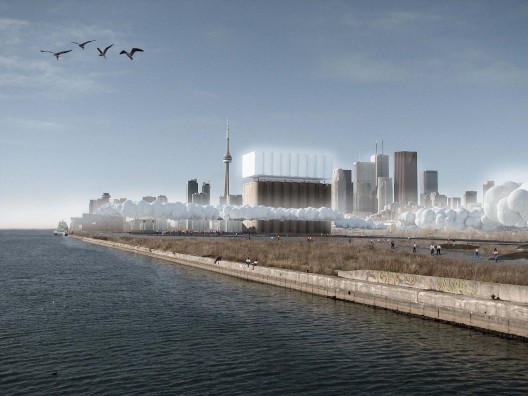
Courtesy Manuel Gross + Patrik Staub + Stefan Vetsch + Yannick Vorberg
Manuel Gross, Patrik Staub, Stefan Vetsch and Yannick Vorberg, all recent graduates of the Swiss Federal Institute of Technology Zurich, have shared with us their winning entry for the AIAS/Vinyl Institute 2015 Pan American Games Awards Pavilion to be situated in Toronto, Canada. Follow after the break for a comprehensive write up and additional images of their competition entry.

Courtesy Manuel Gross + Patrik Staub + Stefan Vetsch + Yannick Vorberg
CONCEPT:
Waterfront Toronto
The Pan Am Games of 2015 in Toronto are a great opportunity, to reconnect the waterfront with the city. This is our goal because the waterfront offers a lot of qualities. First of all, it is a great place to have a rest. There is a beautiful view and the connection to the water. The waterfront is the perfect place to meet, stroll and relax.
The Pan Am Village is located at the West Don Lands, an area that is separated from the waterfront by the railways, the Gardiner Expressway and the Lake Shore Boulevard. With our Project, we bring the people back to the waterfront. The selection of the waterfront as our site is urbanisticly very sustainable – we bridge the physical and psychological barrier of the Lake Shore Boulevard, the Gardiner Expressway and the railways. The pavilion becomes a starting point for the further development of the Lower Don Lands.
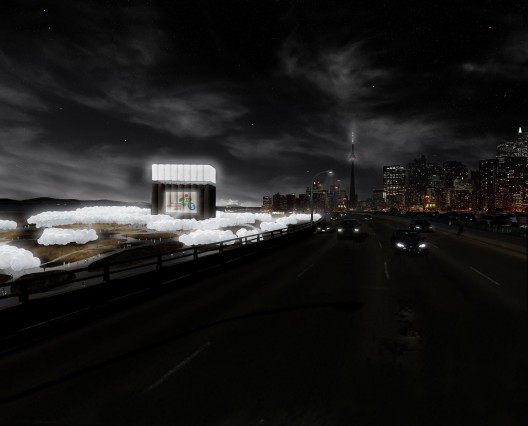
Courtesy Manuel Gross + Patrik Staub + Stefan Vetsch + Yannick Vorberg
Pan Am Games Award Pavilion
Our Design is inspired by the Name of Toronto, which is derived from the Iroquois word tkaronto, meaning “place where trees stand at the water”. After a while, the meaning of tkaronot changed into “meeting place”. We really like the simple idea of a meeting place that is created through a couple of trees. The wood is an ethnic roof, which protects people from rain and sun, the wood attracts the people – our pavilion works as simply as that.
The huge roof of the pavilion creates an interesting and protecting place, where people can meet, relax or entertain themselves. The forest spreads over the site and leads the people to the water. Under the roof there are some boxes, which contain the different programs like public restrooms, ticketing and the stage with the back stage area and storage rooms. These boxes are inspired by the image of supported logs in the wood.
Use of vinyl
As a material concept, we tried to use vinyl not only as a cladding material. We developed a simple structure in which vinyl works as a supporting element in form of standard weather balloons. This structure only works with the use of vinyl and that was exactly our goal.
The form follows the function and the form became very plurivalent. People may recognize the pavilion as a forest, others may see lots of ephemeral clouds in the sky. This equivocation makes the pavilion so interesting and special.
The facade and the roof of the boxes consist of recycled PVC pipes. The pipes have different functions and are more than just a cladding. With this system we also design the furniture for the park. The Victory Soya Mills Silo is an icon of Toronto – townsfolk identify with this building. A light PVC roof creates a special room on top of it without disturbing the presence of the silo.

Courtesy Manuel Gross + Patrik Staub + Stefan Vetsch + Yannick Vorberg
SITE:
Connection
The Victory Soya Mills Silos connect our site visually with the city. Projections on the silos lead the people to the site, a bar on the roof makes this icon even higher. The bar attracts people, even after the games. This sustainable intervention supports the further development of the waterfront. Pedestrians and cyclists will arrive via the Union Station. We reevaluate the underpasses of the railways with the same balloon structure as we used for the pavilion. The Cherry Street underpass connects the village with the pavilion. The Bay Street underpass leads from the Union Station to the Queens Quai, our main bike and pedestrian path. The silo works as an orientation point, “balloon trees” reevaluate the Queens Quai and make the street attractive for pedestrians and cyclists.
A good infrastructure around the site brings people from the city, but also from the wider region to our site. We plan shuttle buses, which connect the Union Station, the Pan American Pavilion and the Pan American Village.
CONSTRUCTION:
Pavilion
Standard, vinyl based and helium filled weather balloons support a PVC PES membrane. A PVC net holds everything together. Wire ropes with a PVC coating anchor the construction to the ground. The boxes under the roof consist of a simple steel substructure. Recycled PVC pipes clad and stiffen this steel frame at the exterior. The pipes also work as a sunblind and a rain drain. A vinyl insulation with an interior PVC cladding completes the construction.
Bar
We use an economical construction for this additional program. Reusable scaffolding stairways and construction elevators bring the visitors to the top of the silo. The bar consists of a simple steel and glass construction. A PVC PES membrane filled with helium and air works as a roof. Transparent organic photovoltaic cells are printed on this membrane. They catch the sunlight and transform it into energy, which supports the bar.
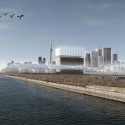
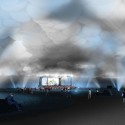
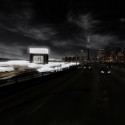
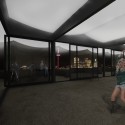
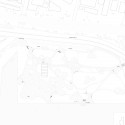
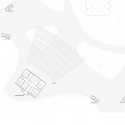
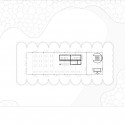
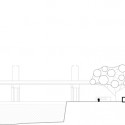
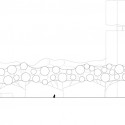

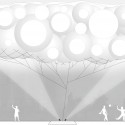
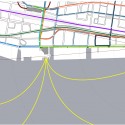
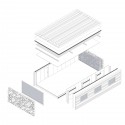
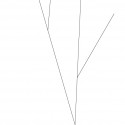
Tuesday, March 01. 2011
"fabric | ch", Art Contemporain et Nouveaux Médias (éd. D. Moulon), Scala (Paris, 2011)
Thursday, February 17. 2011
Interview with Zach Gage
Via Rhizome
-----
By Joshua Noble on Wednesday Feb 16th, 2011
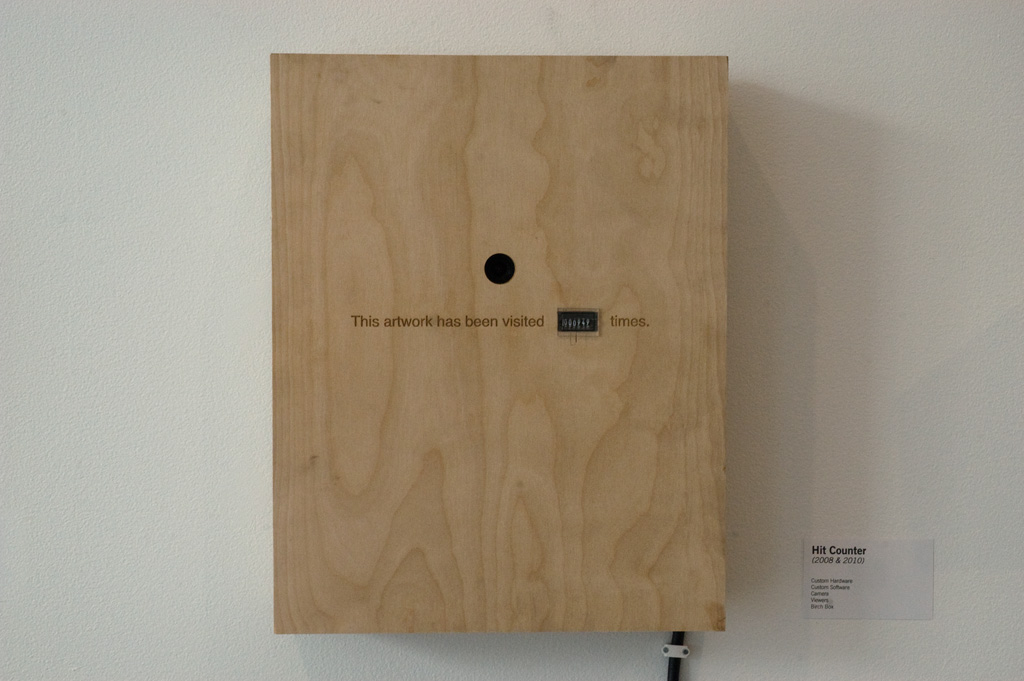
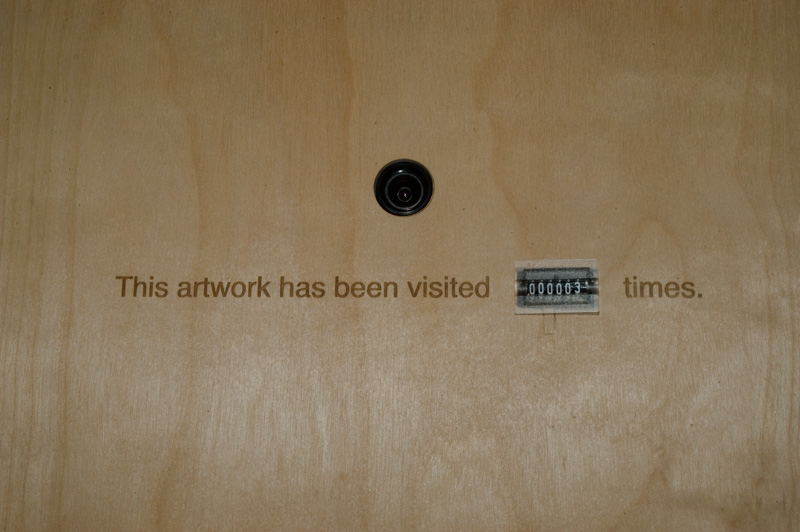
”Between the ubiquity of Internet access and the fact that data has no objective tangible form, internet users have long been plagued with the problem of determining the value of the content they are ingesting.” - Zach Gage
Seen in a certain light, the core of technological mediation has always been presence, absence, and distance. Writing established the possibility of presence during absence, arrows and gunpowder created force at a distance, the telephone created presence at distance, and network computing fundamentally altered the nature of being “absent” or “present” to an almost unrecognizable degree. No small surprise then that contemporary “media art” practice seems to return to these questions as being fundamental investigations. The question of what “presence” could be was explored and expanded throughout the dawn of the internet age: Ken Goldberg’s TeleGarden, Eduardo Kac’s concept of Telepresence, Sven Bauer, Heath Bunting, to grab but a few names. Each possibility of a new field of entry, a new method of retaining, mapping, signifying, and storing, opened a rich possibility. Now fast forward fifteen years and ever-presence is exhausting, a nuisance that forever asks and returns only the vague rewards of a slot-machine and seems to fray our sense of privacy, meaningfulness, boundary, and perhaps even self. So how then to artistically respond to this? Exhibit: Zach Gage.
His works are at once sophisticated and remarkably simple, both in presentation and concept in a way that might be recognizable to Joseph Kosuth or Lawrence Weiner, rather than the Baroque conceptual complexity on display in much media art in the 90’s. Computational art or interactive art has generally taken two tacks in dealing with the complexities of technology itself -- unabashed celebration and dystopian anxiety. At either extreme is the grandiose challenge of prediction: this possible or actual relationship to technology will lead to this consequence or benefit. The reality of living with technology is not only simpler but is often much more banal. The most refreshing element of Gage’s work is how it asks us to do nothing more than consider what is. Working with the instantly familiar data sources, Twitter, Google, chat servers, at their simplest, his work often resembles a refreshingly sharp Occam’s Razor taken to notions of the richness of data and networked experience.
His thesis show, “Data”, is an extremely visually and thematically understated installation comprised of several pieces. Small wooden boxes, wires, and simple placards: none of the forced estrangement, hand-waving interactivity, or spectacle that one associates with computer arts. In particular, one of the pieces in the show, Hit Counter stands out as particularly poignant: a simple measurement of the number of times someone has stood in front of the work. Face recognition software is used to keep track of the actual viewers and the number is displayed on an old-fashioned mechanical counter. Gage states “with no other means to judge it, Hit Counter demands to be assigned a worth based solely on its popularity.” But then, Hit Counter is not merely asking to be judged on popularity. It, like so many things in our media culture, is popularity. It’s nothing else, and it’s not any kind of popularity other than actual physical presence; a sharp reminder of the relationship between presence and popularity. No matter how many people hear about it online, what is written about it, what buzz is generated, it’s a simple box that generates a number based on how many unique people have stood in front of it. I’m not sure whether I’m more struck by the concept itself or that I am so struck by the concept as an ontological exercise: something that simply is actual physical presence. It’s odd that it is odd and, in that oddness, it is a stance closer to Sol Lewitt “Sentences on Conceptual Art” than many other re-interpretations of his legacy and ideas. Reformulating the simplest data object imaginable in the simplest terms has a markedly clarifying effect and in clarification is a rare kind of beauty. I spoke with Zach Gage about Hit Counter, as well as his larger practice.
More about it HERE.
Wednesday, August 25. 2010
Why Privacy Is Not Dead
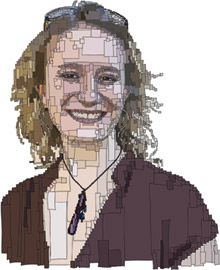 |
| Credit: Nick Reddyhoff |
The reason for this disconnect is that in a computational world, privacy is often implemented through access control. Yet privacy is not simply about controlling access. It's about understanding a social context, having a sense of how our information is passed around by others, and sharing accordingly. As social media mature, we must rethink how we encode privacy into our systems.
Privacy is not in opposition to speaking in public. We speak privately in public all the time. Sitting in a restaurant, we have intimate conversations knowing that the waitress may overhear. We count on what Erving Goffman called "civil inattention": people will politely ignore us, and even if they listen they won't join in, because doing so violates social norms. Of course, if a close friend sits at the neighboring table, everything changes. Whether an environment is public or not is beside the point. It's the situation that matters.
Whenever we speak in face-to-face settings, we modify our communication on the basis of cues like who's present and how far our voices carry. We negotiate privacy explicitly--"Please don't tell anyone"--or through tacit understanding. Sometimes, this fails. A friend might gossip behind our back or fail to understand what we thought was implied. Such incidents make us question our interpretation of the situation or the trustworthiness of the friend.
All this also applies online, but with additional complications. Digital walls do almost have ears; they listen, record, and share our messages. Before we can communicate appropriately in a social environment like Facebook or Twitter, we must develop a sense for how and what people share.
When the privacy options available to us change, we are more likely to question the system than to alter our own behavior. But such changes strain our relationships and undermine our ability to navigate broad social norms. People who can be whoever they want, wherever they want, are a privileged minority.
As social media become more embedded in everyday society, the mismatch between the rule-based privacy that software offers and the subtler, intuitive ways that humans understand the concept will increasingly cause cultural collisions and social slips. But people will not abandon social media, nor will privacy disappear. They will simply work harder to carve out a space for privacy as they understand it and to maintain control, whether by using pseudonyms or speaking in code.
Instead of forcing users to do that, why not make our social software support the way we naturally handle privacy? There is much to be said for allowing the sunlight of diversity to shine. But too much sunlight scorches the earth. Let's create a forest, not a desert.
Danah Boyd is a social-media researcher at Microsoft Research New England, a fellow at Harvard University's Berkman Center for Internet and Society, and a member of the 2010 TR35.
Copyright Technology Review 2010.
Personal comment:
In connection to this post, you can look a this picture from Mashable site.
fabric | rblg
This blog is the survey website of fabric | ch - studio for architecture, interaction and research.
We curate and reblog articles, researches, writings, exhibitions and projects that we notice and find interesting during our everyday practice and readings.
Most articles concern the intertwined fields of architecture, territory, art, interaction design, thinking and science. From time to time, we also publish documentation about our own work and research, immersed among these related resources and inspirations.
This website is used by fabric | ch as archive, references and resources. It is shared with all those interested in the same topics as we are, in the hope that they will also find valuable references and content in it.
Quicksearch
Categories
Calendar
|
|
July '25 | |||||
| Mon | Tue | Wed | Thu | Fri | Sat | Sun |
| 1 | 2 | 3 | 4 | 5 | 6 | |
| 7 | 8 | 9 | 10 | 11 | 12 | 13 |
| 14 | 15 | 16 | 17 | 18 | 19 | 20 |
| 21 | 22 | 23 | 24 | 25 | 26 | 27 |
| 28 | 29 | 30 | 31 | |||
